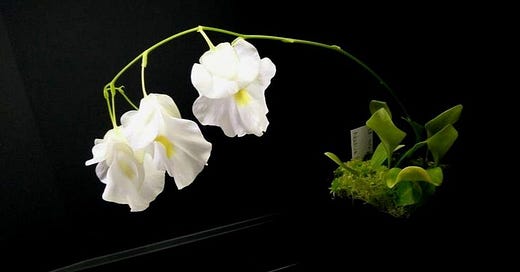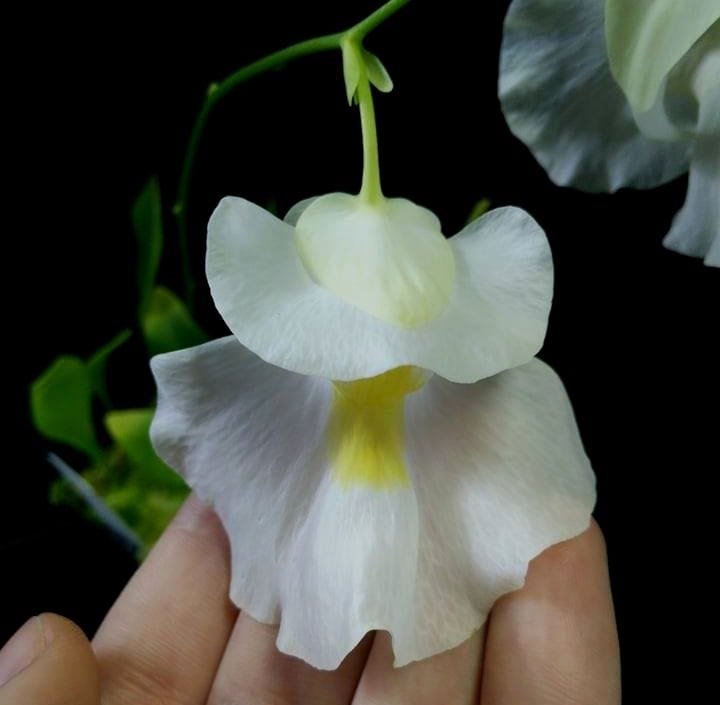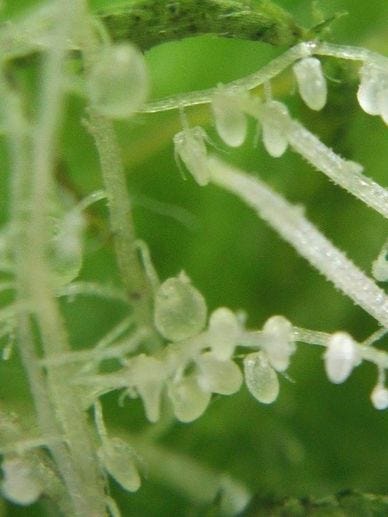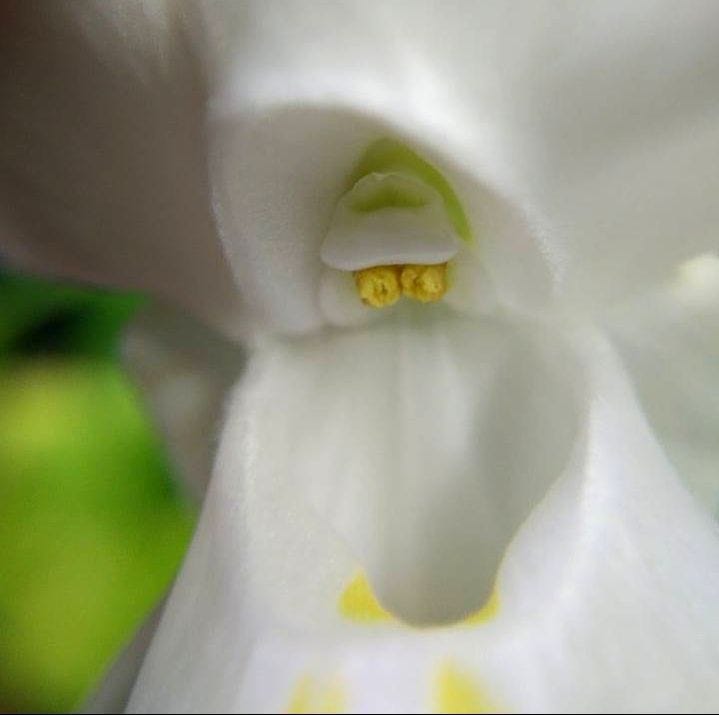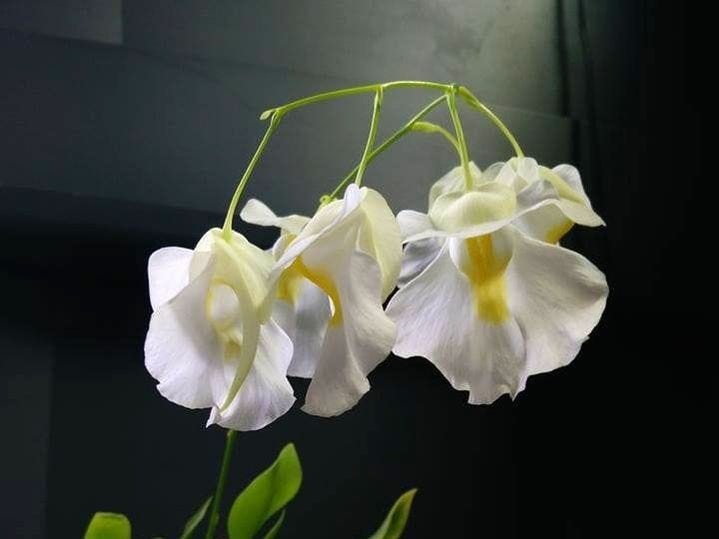SPECIES PROFILE: UTRICULARIA ALPINA
Learn how to cultivate this beautiful epiphytic Utricularia species from South America
This is our first of hopefully many species profiles. In essence, species profiles will include a generous amount of growing information about a particular species, including tips, our experiences, and photos. Please let us know if you find this article helpful. I hope you enjoy!
Some General Information on Utricularia
Since we haven't talked much about Utricularia on our blog, I'll write a quick overview of the genus. Utricularia (bladderworts) is a genus of over 200 carnivorous plants. While very diverse, all Utricularia essentially share the same underlying structure. They have a network of underground stems (known as a stolons) that grow under the soil surface for terrestrial species, along supports (usually mossy tree trunks, rocks, etc.) for epiphytes, and free-floating for aquatic species. Attached to the stolon are small bladders, which are sealed with a "trapdoor." Water is pumped outside of the bladder, leaving the interior of the bladder with negative pressure relative to the outside and creating a partial vacuum. The outside of each trapdoor contains trigger hairs, much like a Venus fly trap (although the trigger hairs of Utricularia are purely mechanical in nature, in contrast to those of Venus fly traps, which work on irritability). When these hairs are touched, the trapdoor opens and the vacuum sucks in the nearby prey, usually consisting of protozoa and other soil inhabitants. In order to photosynthesize, the stolons produce leaf shoots that penetrate the soil surface.
Overview of U. alpina and sect. Orchidioides
U. alpina is a member of Utricularia section Orchidioides, a specific group of primarily epiphytic species that grow in South America and have exceptionally showy flowers (hence the name of the section). Many growers claim to have difficulty with plants from this section; they certainly can be quite temperamental! However, U. alpina is by far the easiest of the group and is an excellent way to get your feet wet with epiphytic Utricularia before jumping into more difficult and expensive species. In addition to being an excellent beginner epiphytic Utricularia, U. alpina also has exceptionally large flowers and traps when compared to nearly every other Utricularia!

Lighting, Temperature, and Humidity
Like most members of sect. Orchidioides, U. alpina is essentially a highland plant. In terms of culture requirements, it should be happy with essentially any Highland Nepenthes or Heliamphora. Specifically, U. alpina will appreciate daytime temperatures between 70 and 80 degrees Fahrenheit (21 to 27 Celsius) and humidity greater than 60%. With careful acclimating it may be possible to grow U. alpina in slightly lower humidity levels, as I have seen growers keep them successfully on windowsills before. At night, the temperatures should drop a minimum of 10 to 15 degrees for long-term success. I have grown my plants both in low light and bright light. They seemed to do fine in both, with far larger leaves being developed in low light. If moving your plant to brighter light, make sure to do so gradually; I made the mistake of moving mine with no acclimation, which caused a great deal of leaves to brown.
Media
U. alpina, like other Orchioides Utricularia, appreciates a light, airy, moist mix that does not tend to stay saturated for long (although U. alpina does tend to be more forgiving of errors regarding moisture levels than some of the pickier species in this section). Growing many of these species in net pots is not a bad idea as the stolons appreciate good air circulation. Most growers have success with combinations of long-fibered Sphagnum moss, live Sphagnum, and aggregates such as bark chunks and perlite. My U. alpina really enjoys the 100% live Sphagnum mix that it's in.
Flowering and Reproduction
U. alpina is great in that it can flower very often without necessarily requiring seasonal triggers. I know of some growers whose plants are basically in flower all of the time. A stalk will emerge from the soil surface and gradually elongate until it reaches close to 1 foot in length. Flowers will gradually open and remain opened for quite some time. My flowers have all topped out between 2 and 3 inches -- I don't think I've seen any pictures of flowers much larger than that either.
U. alpina must be manually pollinated to produce seed. You cannot self-pollinate with pollen from the same flower, but you can use pollen from other flowers on the same stalk. In order to collect pollen, lift the top flap of the flower. Using a toothpick, collect pollen from the yellow part (visible to the right). You can either save it for later or place it on the stigma (green part) of another flower. I have no experience storing Utricularia pollen, so I cannot comment on the process or whether or not it is successful.
Shortly after a successful pollination (in my experience, anywhere from a few days to a week or two), the exterior of flower will brown and fall off. The left-behind ovary will swell for a few weeks or months until it is ripe. Then, it will take on a translucent brown color and turn rather crunchy; this is the ideal time to harvest seeds. Utricularia seeds are quite small and must be sown fairly quickly after harvest in order to have success. I have heard that seeds can be stored in the refrigerator if wet, but I have yet to try it for myself.
Final Notes
In conclusion, U. alpina is a fairly tolerant epiphytic species (when given proper conditions) with extremely beautiful flowers. It's an excellent starting point before moving into the more difficult species, like U. quelchii, which Alvin will likely write a species profile on in the coming months. Lastly, if you've recently ordered a U. alpina and it looks like crap, don't fret! My plant looked quite miserable for a few months after arrival. Nearly all species in section Orchidioides are sensitive to changes in conditions and take a bit of time to recover.

